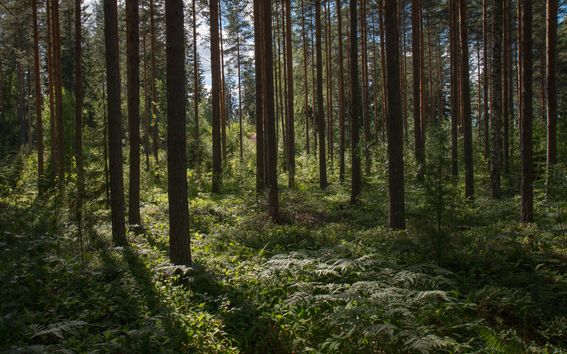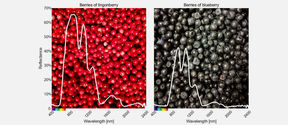Artificial intelligence meets Finnish forests – estimating boreal forest variables and biomass
Remote sensing techniques are valuable and low-cost tools for frequent forest monitoring purposes. The exponentially increasing data volume calls for the development of next-generation artificial intelligence-based solutions.

Remote sensing of forests
The boreal forest is the largest continuous land ecosystem on earth covering nearly one third of the global forest area. It composes a vast majority of the carbon pools in the northern hemisphere and plays a great role in climate change mitigation. Finnish forests are also part of the boreal forest ecosystem. Finland has 22.8 million hectares of forest, which equals to three-quarters of the country’s land surface area.
Forests can be characterised by biophysical variables, such as tree height, trunk diameter or stem volume. Accurate and reliable measurements of forest characteristics, structure and biomass are important for sustainable forest management. Furthermore, research on the retrieval of biophysical forest variables is of special relevance in order to extend our knowledge about the dynamics of forests and the environment.
Satellite-based remote sensing is a widely accepted tool in forest inventory. Since the beginning of digital remote sensing, the estimation of forest variables from remotely sensed spectral information has been of great interest. Especially for frequent large-scale forest monitoring purposes, remote sensing techniques are valuable and low-cost tools. In remote sensing, the fundamentals of any biophysical variable retrieval consist of relating the remotely sensed spectral information to the actual parameters on the ground. The relation is usually found using a model-based estimation algorithm, e.g. a linear regression.
Use of artificial intelligence in forest-related remote sensing
Today, the volume of open and free satellite imagery is increasing exponentially. This increases the need for reliable, robust and transferrable techniques for large-scale information extraction. The exponential growth in available remote sensing data, together with the increased computational resources, has raised the interest in artificial intelligence within the remote sensing community during the last few years. Especially machine learning-based methods, such as kernel-based regressions [1], deep neural networks [2] and convolutional neural networks [3], have seen a great increase in popularity for satellite image analysis.
Recent developments have enabled the utilisation of artificial intelligence for analysing complex structured vegetation with significant aboveground biomass and carbon storage, such as the boreal forest. Machine learning algorithms can overcome many of the shortcomings in existing methods for retrieving forest information from satellite imagery. Machine learning algorithms have the potential to make use of the complex indirect and nonlinear relationships in modern remote sensing data and reveal their full information content. Moreover, machine learning-based methods are more robust in handling uncertainties and noise compared to traditional methods.
The use of machine learning methods in forest-related satellite remote sensing research is constantly more common. Traditional methods are also often combined with machine learning algorithms yielding the so-called hybrid methods. As a result of the ever-increasing satellite data volume and advanced cloud computing, the need for artificial intelligence-based analyses is well-justified.
About the author: Eelis Halme is a doctoral student in geoinformatics at Aalto University and an early career researcher at VTT.
References
[1] Halme, E., Pellikka, P. & Mõttus, M. 2019, "Utility of hyperspectral compared to multispectral remote sensing data in estimating forest biomass and structure variables in Finnish boreal forest", International Journal of Applied Earth Observation and Geoinformation, vol. 83, doi: 10.1016/j.jag.2019.101942.
[2] Astola, H., Seitsonen, L., Halme, E., Molinier, M. & Lönnqvist, A. 2021, "Deep neural networks with transfer learning for forest variable estimation using Sentinel-2 imagery in boreal forest", Remote Sensing, vol. 13, no. 12, doi: 10.3390/rs13122392.
[3] Mõttus, M., Molinier, M., Halme, E., Cu, H. & Laaksonen, J. 2021, "Patch Size Selection for Analysis of Sub-Meter Resolution Hyperspectral Imagery of Forests," 2021 IEEE International Geoscience and Remote Sensing Symposium IGARSS, 2021, pp. 2035–2038, doi: 10.1109/IGARSS47720.2021.9554257.
Show other posts from this blog

Vaikka Grönlanti sulaa, se ei nosta merenpintaa Suomessa
Grönlannin mannerjäätikön sulaminen nostaa valtamerien pintaa. Sulamisen seuraukset kuitenkin käytännössä kumoavat vaikutukset Suomessa.
True colors of berries
Optical remote sensing data may provide new approaches for mapping berry-bearing species in forests.